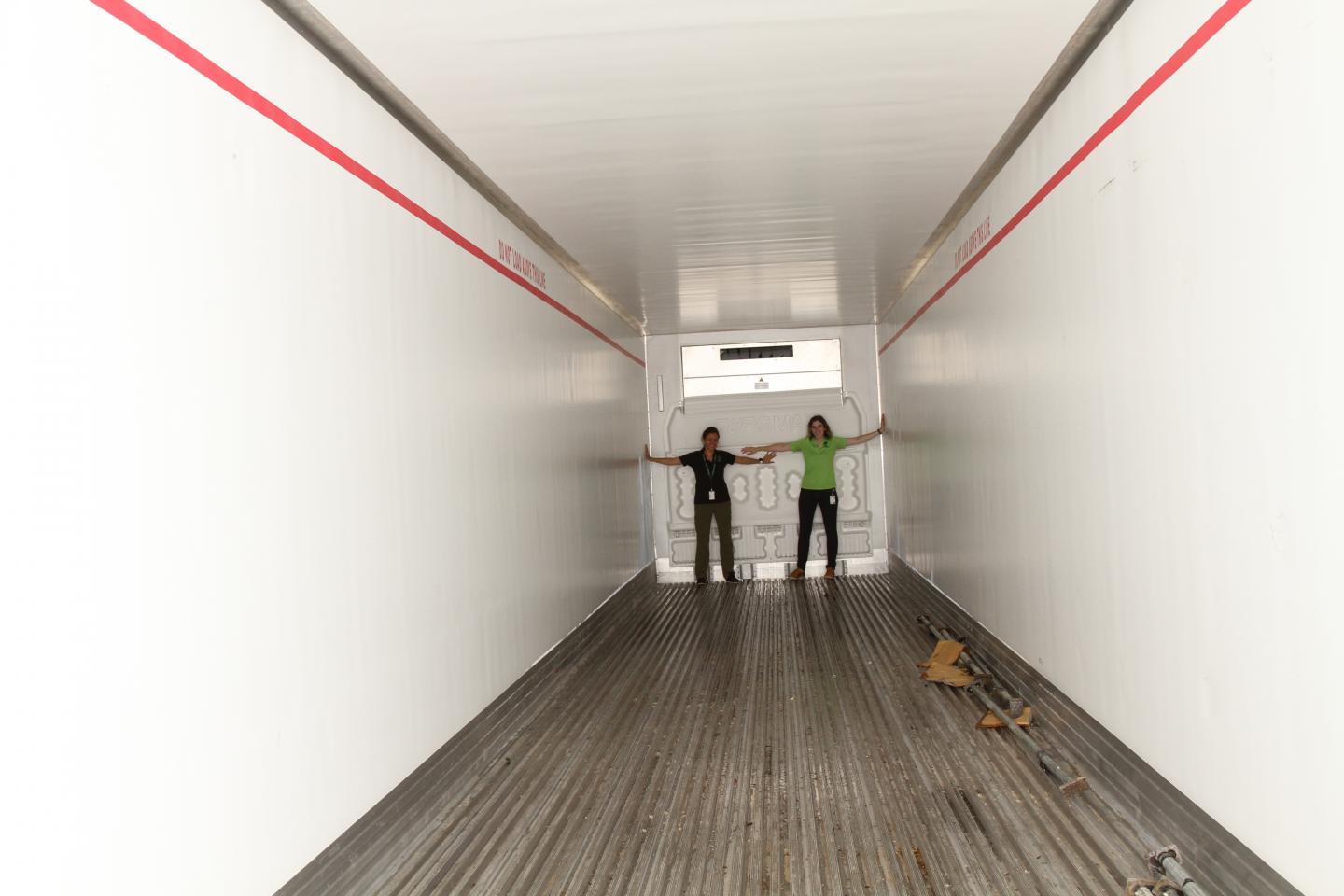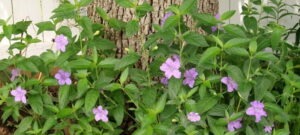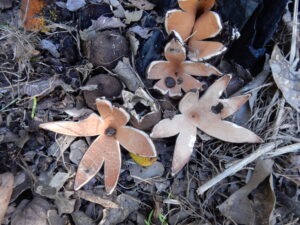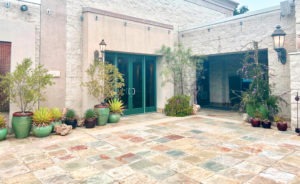In March 2017, the scientific community was ablaze with the news that the University of Louisiana at Monroe would no longer be able to care for its natural history collection, including a significant fish collection and 470,000 herbarium specimens. The issue made national headlines as well, inspiring articles from the likes of Smithsonian Magazine, The Washington Post, Nature, Gizmodo, and Atlas Obscura. It was a rare drama for the typically quiet collections world, and BRIT was soon to find itself right in the thick of it.
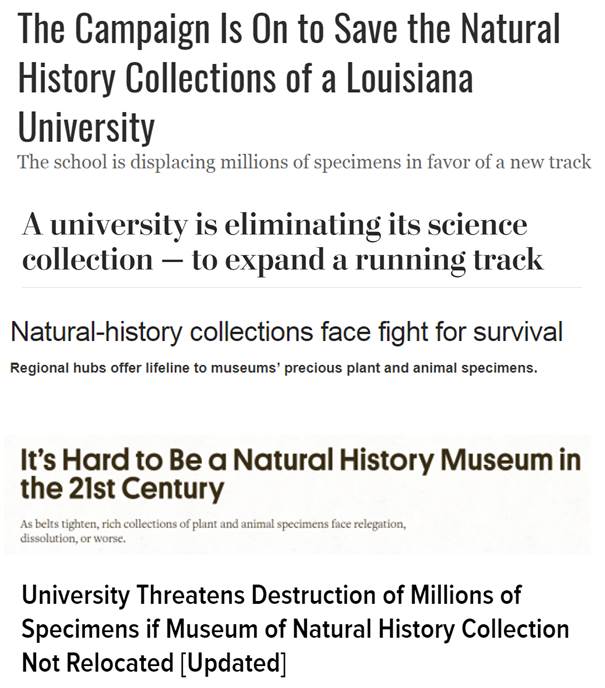
But let’s back up a bit. Several years ago, the natural history collections at University of Louisiana at Monroe were moved from a campus building to an old print shop underneath Brown Stadium. Conditions were far from ideal for housing precious scientific specimens, but it was better than nothing and was only temporary; the specimens were eventually supposed to find a new spot in an academic building. The years slipped by, though, with that new spot never materializing, and the day finally came when the stadium’s needs superseded those of the collections. Despite outrage from the local collections community, the specimens had to go. There was simply nowhere left to keep them.
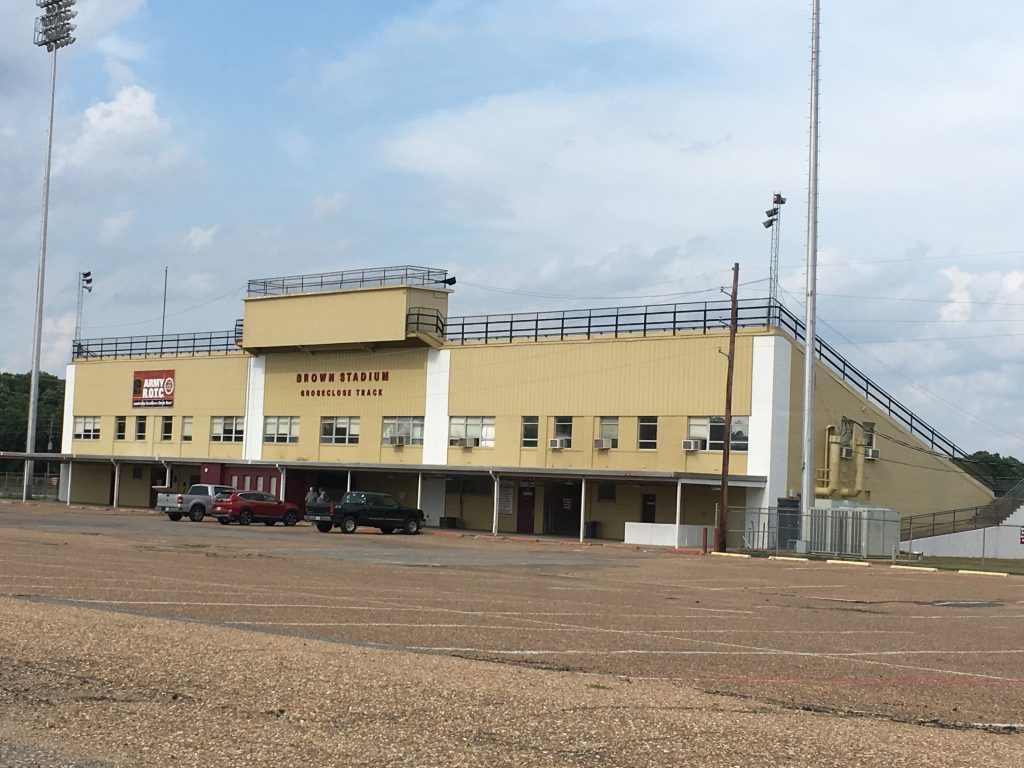
Luckily, institutions near and far made offers to adopt the specimens and prevent the loss of irreplaceable scientific data. The insects went to Mississippi State, the fish to Tulane, the “herps” (reptiles and amphibians) to University of Texas at Arlington, and the plants to BRIT. We are honored to now house the R. Dale Thomas Collection, named for the botanist and curator whose lifetime of efforts grew the collection from 250 specimens to the nearly half million it is today.
Some History
BRIT has taken in and cared for a number of orphaned collections of various sizes in our 30 years. In fact, taking in orphaned collections is at the very core of BRIT’s identity and its mission to deepen our knowledge of the plant world. In 1987, BRIT was founded to house the 450,000 specimens from Southern Methodist University (SMU), a collection which forms the nucleus of the Institute. The herbarium adopted another orphaned collection in 1997 with 360,000 specimens from the Vanderbilt University Herbarium (VDB) and then another 78,000 specimens in 2000 from Southeastern Oklahoma State University (DUR). No doubt our past experience rescuing these large collections was a factor in being chosen as the final home for the R. Dale Thomas Collection (NLU). [Sidenote #1: In herbarium parlance, collections are often referred to by their official herbarium acronym, seen above in parentheses for each collection. The official acronym for the herbarium at University of Louisiana at Monroe was NLU, from Northeast Louisiana University, the original name of the school.]
Back to the Story…
Moving a collection of this size is no easy feat. Our first step to prepare for the move was designating and clearing out space for the 360 seven-foot metal herbarium cabinets coming from Louisiana. We decided to house the entire collection in our upstairs herbarium, which was being used for additional herbarium storage, library overflow, and BRIT Press storage. Making room for NLU was a consolidated effort among staff, and we couldn’t have done it without the help of our wonderful interns and volunteers!
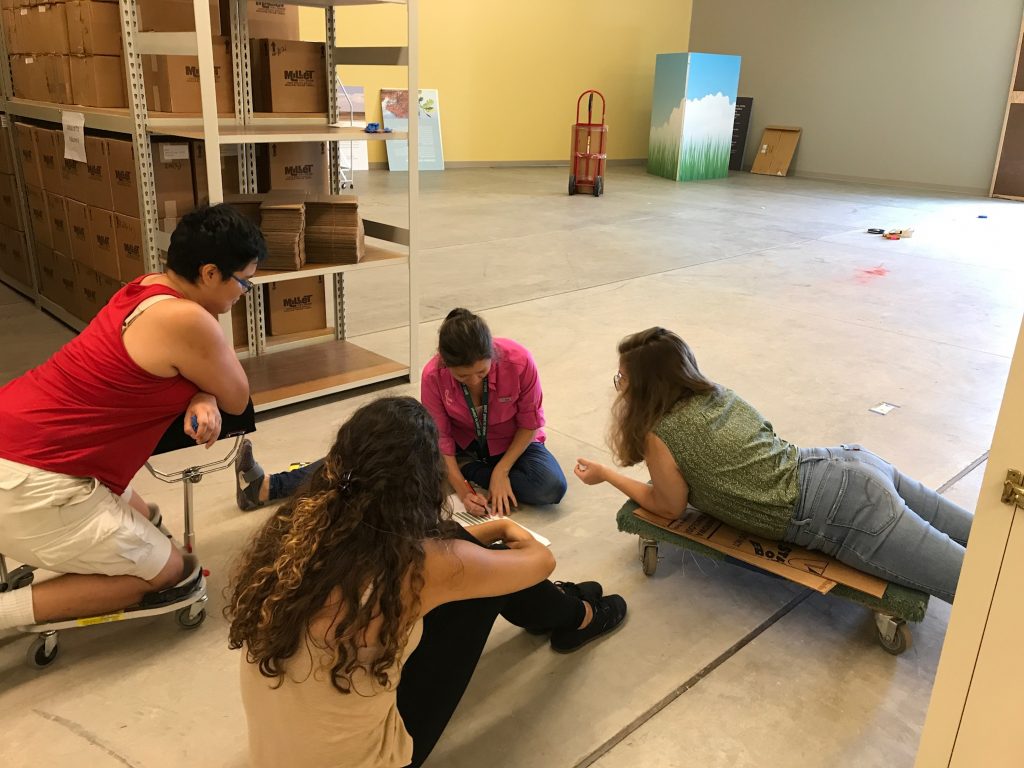
BRIT wasn’t the only place making preparations for the move. There was a lot of work to be done back in Monroe to prevent damage to specimens during the move. Each cabinet was compacted to lower the center of gravity and prevent the specimens from shifting. Specimens stored in boxes were either repacked and consolidated or were placed into the herbarium cabinets.
The university staff was extremely helpful preparing the collection for the move, showing grace and thoughtfulness throughout a difficult situation.
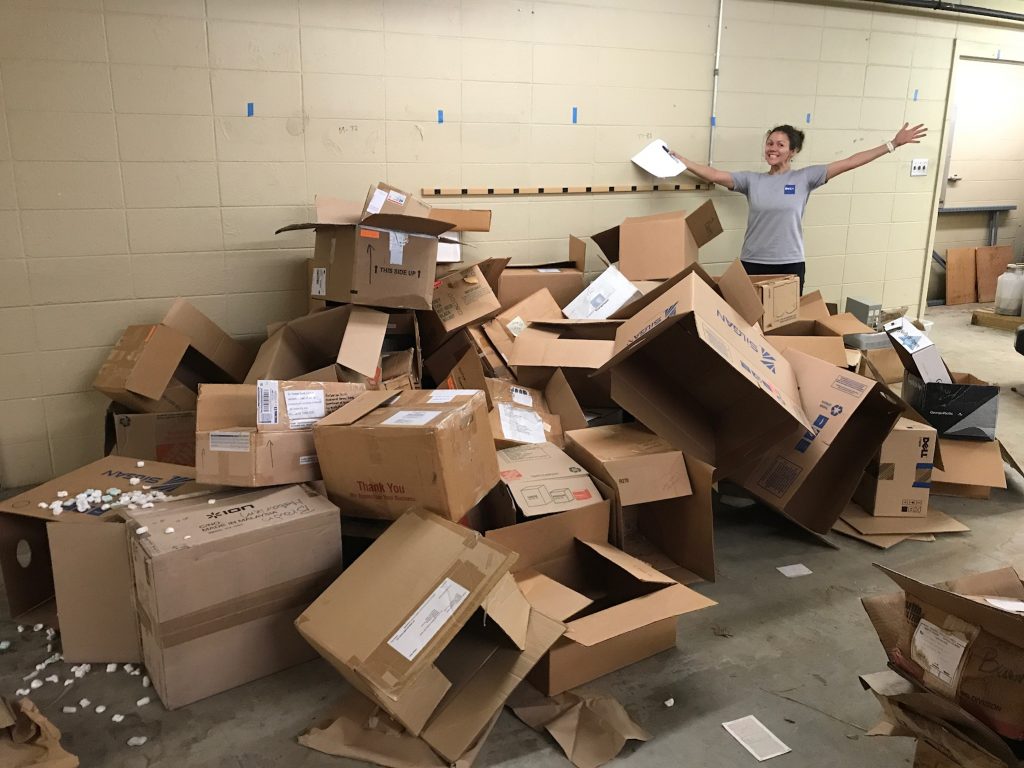
On July 18, 2017, we began the move. We loaded the first 165 herbarium cabinets onto two freezer trucks, which then made the 320-mile trip from Monroe, Louisiana, to Fort Worth, Texas. Those trucks were unloaded at BRIT on July 31st. Then we turned around and did it again. We loaded the last half of the collection into two trucks in Monroe on August 8, and they were unloaded at BRIT on August 22.
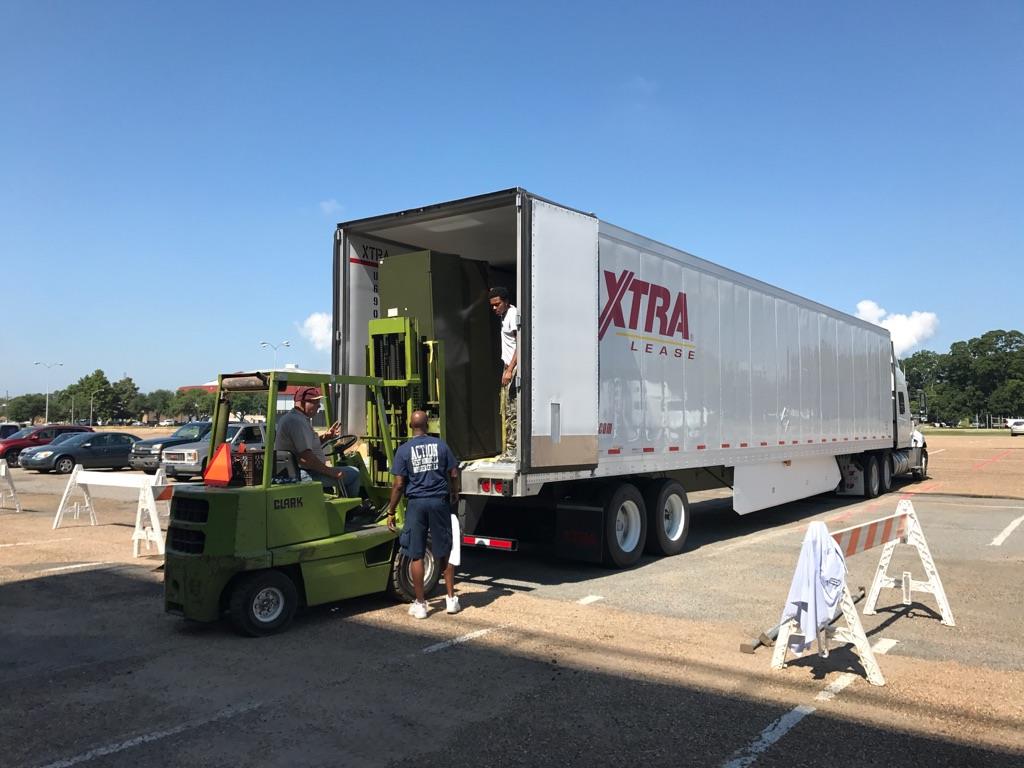
Why the long delay between cabinet pickup and cabinet unload? Well, before any plant material is brought into the BRIT herbarium, it has to be frozen for a length of time to kill any pests that could cause damage. And a collection of 470,000 is no exception! After considering our options, we decided the most efficient and reliable way to achieve this would be to use freezer trucks during the transportation. The team at Seville Farms (whose nursery we visited earlier this year) generously donated the usage of two freezer trucks, transportation, and logistical guidance. They also stored the trucks on their property and kept them running at a crisp -20°F for two weeks each until we were ready to unload the cabinets into our herbarium.
But we weren’t totally certain the trucks would keep the specimens frozen long enough to sanitize them. So before we loaded the trucks, we placed remote data loggers inside 3 cabinets on each truck to capture the temperatures. These loggers would help us make sure the specimens reached and stayed at a temperature sufficient to eradicate any pests. The loggers were placed between specimen folders so best to mimic the temperatures of the actual specimens, and they were scattered in the trucks from the far front corner, back left corner, and randomized towards the middle.
A few days after the move, we visited Seville Farms to check on the temperature data and tested two methods of data retrieval:
- Walking along the outside of the trucks very slowly, cell phone in hand, hitting “refresh” over and over again. This proved sufficient in some cases, but the thick insulated walls of the trucks often made a bluetooth connection difficult.
- Quickly opening the door of the freezer truck, climbing in, and downloading the data in the dark. This worked well, if you enjoy standing in -20°F for a few minutes!
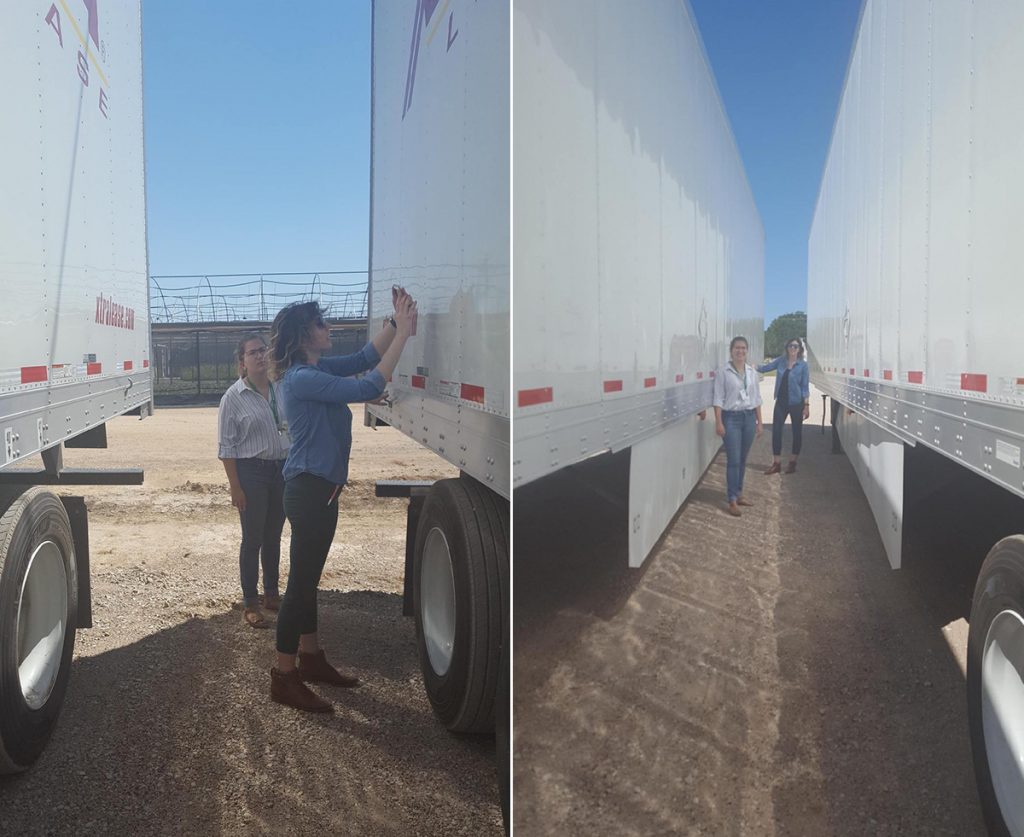
Right – This photo gives an idea of just how longggggggg those trucks are.
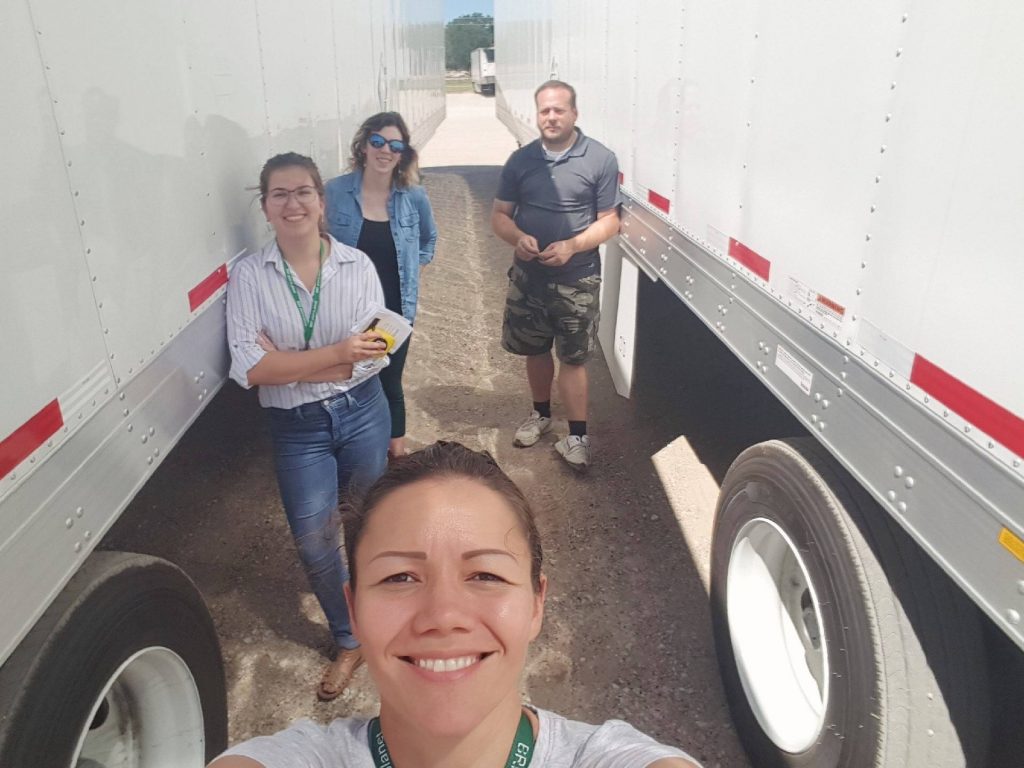

Science is all about learning, right? The first time we climbed into the freezer trucks, we were wary of closing the door all the way, which we later learned (thanks to our data loggers!) had a significant effect on the truck’s ability to regain the cold temperature quickly. Tiana and I took a photo while the door was slightly ajar, although the only hint of the frigid temperatures is the fog on my sunglasses.
https://www.facebook.com/plugins/video.php?href=https%3A%2F%2Fwww.facebook.com%2FBRITorg%2Fvideos%2F1560282740677298%2F&show_text=0&
We went back a few days later to check the temperatures again, and this time we closed and latched the door quickly – as shown in the above video. (We trust Bryain that much!) The trucks lost a little of the cold air while the door was open, but it was much less dramatic, and recovery was fast. [Sidenote #2: We want others to be able to learn from our experiences during this move and plan to write up our notes and publish them to the international collections community. Hence the careful documentation of our methods!]
The Great Unloading
What goes on the truck eventually must come off. After sitting in the freezer trucks for two weeks, each cabinet was, one by one, taken upstairs to the BRIT herbarium and installed in place, making sure to retain the same order so that the specimens inside the cabinets would still be arranged properly. The video below shows a timelapse of this process — 50 cabinets in only 35 seconds!
On the afternoon of August 22, 2017, only one cabinet remained on the truck.
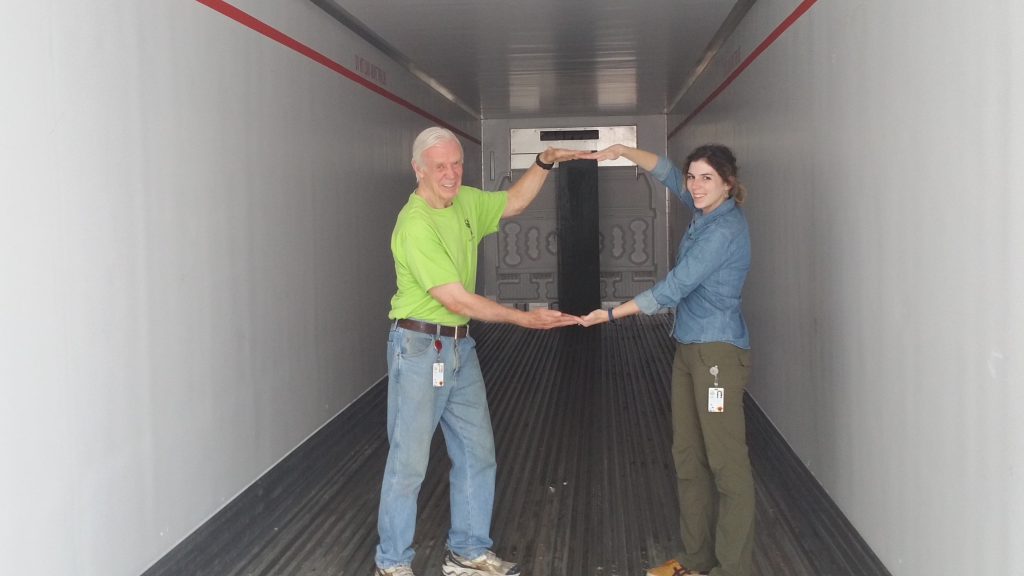
We attached a GoPro to the cabinet and recorded a video of the long journey from the back of the freezer truck to its new home in the BRIT herbarium. By pure chance, the very last cabinet contained specimens of Ophioglossum (adder’s tongue fern) — the specialty of Dr. R. Dale Thomas. We couldn’t imagine a better way to complete the collection move.
BRIT is incredibly honored to be trusted with the future care of this amazing collection, and we recognize the hard work of its many curators, as well as those who worked closely with and supported the collections. We vow to honor their contributions by making sure this priceless scientific collection continues to be accessible to the world.
The collection had a long history before coming to Fort Worth, and at BRIT it will live on and be used as a scientific resource. Our staff — who you see in the above video — are all so very happy to have a small part in the life of the R. Dale Thomas Collection. Stay tuned for future updates!

